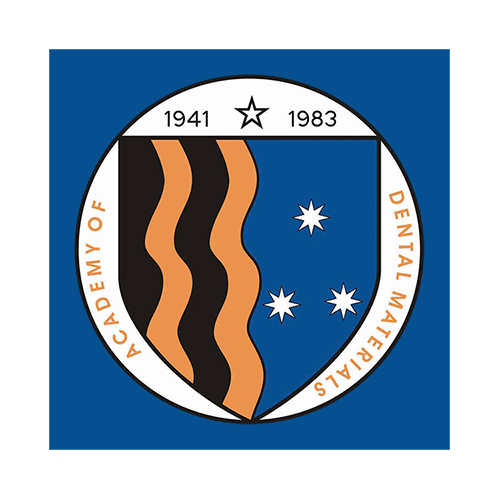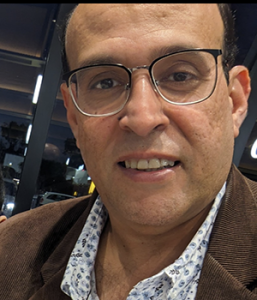ACADEMY OF DENTAL MATERIALS

WEBINARS
“Meet the Fellows”
The ADM proudly presents “Meet the Fellows” 2025 Webinars and Live Q & A on
From Surface to Interface: Understanding Staining and Fatigue of Direct and Indirect Restorations
Featuring:
Vesna Miletic (University of Sydney, Australia)
This talk summarizes the effects of staining and aging on the optical properties of contemporary restorative materials. Across resin cements, composites, and gingiva-colored materials, optical properties were consistently found to be material- and condition-dependent. Factors such as resin cement translucency, type of dentin replacement, staining medium (e.g., red wine, coffee, tea), and aging duration significantly influenced final appearance. Highly translucent restorative materials particularly affected colour changes and appearance of restorations. While bulk-fill and universal composites performed comparably in some cases, sorption, solubility, and dentin replacement materials impacted optical outcomes. Some bioflavonoid-containing mouth rinses showed promise for reducing staining effects compared to traditional chlorhexidine. Clinically, these findings underscore the need for careful material selection and aesthetic layering to ensure long-term stability of appearance in restorations exposed to common dietary and oral hygiene conditions.
Nicola Scotti (University of Turin, Italy)
In adhesive restorative dentistry, maintaining marginal integrity remains a key clinical challenge. Gaps at the tooth-restoration interface could compromise the long-term success, often leading to marginal staining, secondary caries, sensitivity, and restoration failure. A critical factor contributing to this deterioration is cyclic fatigue induced by repetitive occlusal loading over time. Cyclic fatigue progressively undermines the stability of the adhesive interface, especially in high-stress areas, weakening the hybrid layer and promoting interfacial degradation. In vitro studies simulating physiological loading conditions have provided insight into the fatigue behavior of different adhesive systems and direct/indirect restorative materials. Understanding the pathways of fatigue-induced damage is essential for the development of more durable restorative strategies and can inform clinical insights aimed at proper clinical interpretation of the marginal gap.
 | Thursday, May 22, 2025 10 am (AEST), 2 am (CEST), 7 pm (CDT, minus one day) REGISTER TODAY! Thursday, May 29, 2025, 4 pm (AEST), 8 am (CEST), 1 am (CDT) REGISTER TODAY! Each session to be held on Zoom and will last about an hour and a half. |  |
| Dr. Vesna Miletic University of Sydney Sydney, Australia | Dr. Nicola Scotti University of Turin Turin, Italy | |
Dr Vesna Miletic is Professor and Director of Restorative Dentistry and Director of Academic Career Development at the University of Sydney, Faculty of Medicine and Health, Sydney Dental School. Prof. Miletic is also Adjunct Senior Scientist at The University of Texas School of Dentistry at Houston, The Houston Center for Biomaterials and Biomimetics (USA) and Visiting Professor at University of Belgrade School of Dental Medicine (Serbia). She has more than 20 years of clinical practice, research and teaching in dentistry, particularly restorative dentistry and endodontics. Her research interests involve all aspects of restorative dental materials and more recently innovations in dental education. Prof. Miletic has more than 80 bibliographic references (scientific papers and book chapters), multiple invited talks at national and international events and 4 national patents. She supervised 8 completed PhD and 1 MPhil theses and is currently supervising 5 PhD/MPhil students. Prof. Miletic is an expert evaluator for the European Research Agency and editorial board member in three leading dental journals. She is a Fellow of the Academy of Dental Materials (FADM) and Senior Fellow of Advanced HE (SFHEA). She was awarded several international and national awards for excellence, including the IADR Centennial Emerging Leader Award in 2020. | Nicola Scotti is a Full Professor in Restorative Dentistry at the University of Torino, Head & Dean of the Dental School Lingotto, University of Turin, Italy. PhD in Nanotechnology, University of Trieste. President of the Centro Interdipartimentale di Ricerca (CIR) Dental School Lingotto. Professor and Director of the Post-Graduate course in Restorative Dentistry and Aesthetics, University of Torino. Director of Scuola di Specializzazione in Pediatric Dentistry, University of Turin. Teacher in Restorative Dentistry at the University of Turin. Collaborator professor of the discipline “Preventive and minimally invasive procedures” for post-graduate courses at UNESP, San Paolo, Brasil. Tutor and Teacher in the PhD program in Bioengineering and Medico-Surgical Disciplines, University of Turin. Co-Advisor in the PhD program of ICT-UNESP, Campus de São José dos Campos, Brasil. President member of the European Federation of Conservative Dentistry, Fellow of the Academy of Dental Materials, Active member of the Italian Academy of Restorative Dentistry. | |
Want to become member? Click “Join or Renew” below for more information, including fees and how to sign up.





